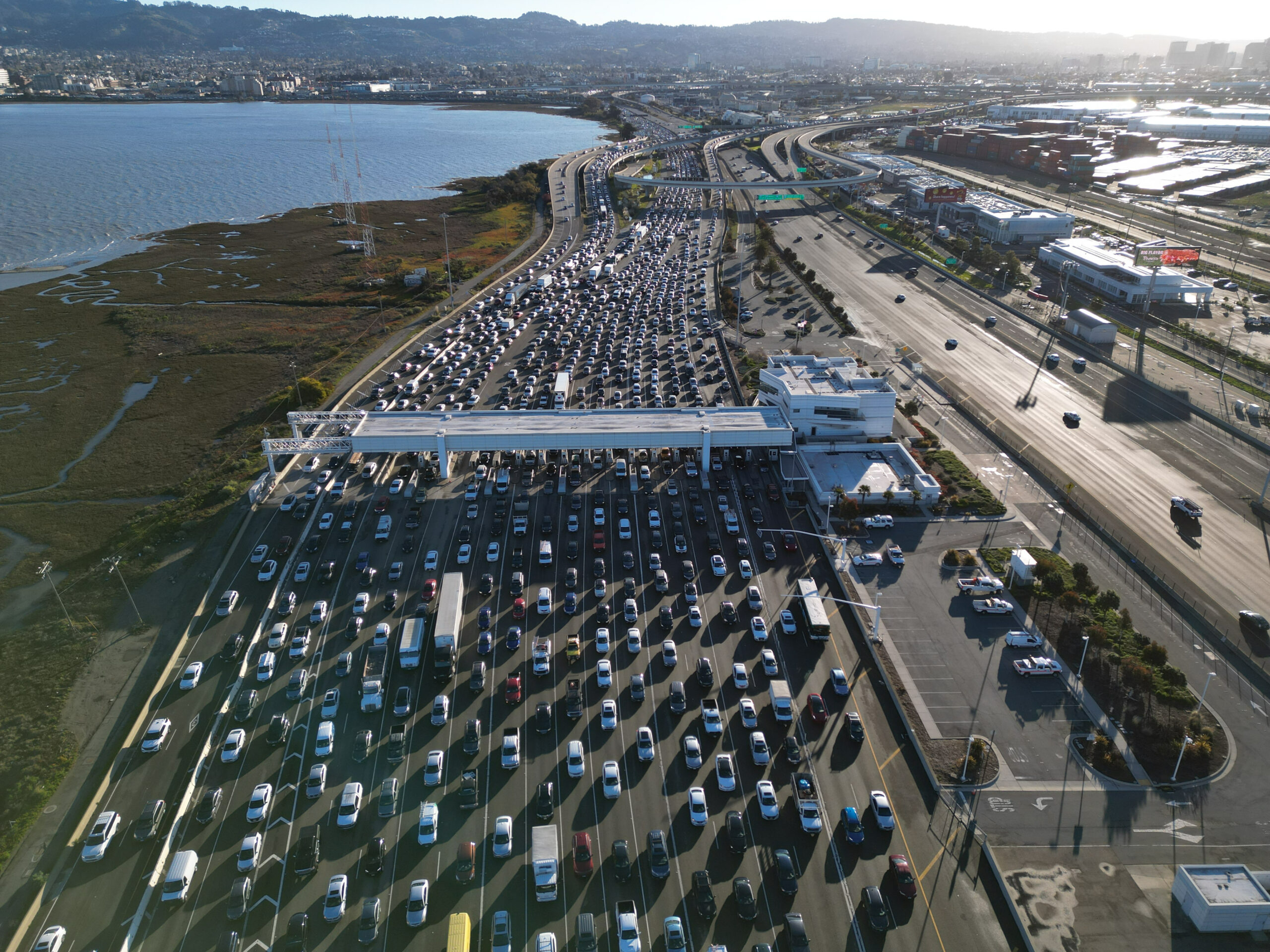Some 10% of drivers have fallen behind on paying their Bay Area bridge bills, with authorities issuing 12.5 million toll violations in the fiscal year ending in June 2023—triple the 2019 total—The Standard recently reported.
The skyrocketing violations began when toll collection went cashless in March 2020, spurred by the pandemic. In December 2020, the Bay Area Toll Authority paused sending unpaid notices on non-commerical vehicles to the California Department of Motor Vehicles, where they can hold up vehicle registrations. But that pause is set to conclude by the end of this year.
With the clock ticking on DMV notices, Bay Area drivers have a one-time opportunity to get their unpaid violations forgiven, and some people may qualify for a payment plan for toll fees.
Here’s how to sign up.
What Are Toll Violations, and Do I Have Any?
Any driver who crosses a Bay Area toll bridge without a FasTrak transponder will receive an invoice in the mail to pay their toll.
Drivers must pay their toll balance within 21 days. If they don’t, they will receive a $5 first notice violation per crossing if they drove on one of the state-owned bridges, which include the Bay Bridge, San Mateo Bridge, Dumbarton Bridge, Carquinez Bridge, Benicia-Martinez Bridge, Antioch Bridge and Richmond Bridge. The first notice fine for the Golden Gate Bridge, which is run by a separate entity, is $25.
Drivers who don’t pay their invoices after 60 days will receive a second notice violation, which tacks on an additional $15 for state-owned bridges and $70 for the Golden Gate Bridge.
A car driver who crosses the Bay Bridge, for example, and fails to pay their toll after 60 days will eventually end up owing $27, including $7 for the toll and $20 between the two fees. A Golden Gate Bridge car driver in the same situation would end up owing $103.75.
Drivers who have racked up violations should have received notices in the mail, which they can pay online at the Bay Area FasTrak website if they still have the violation number.
Drivers who don’t have a violation in hand can call 877-BAY-TOLL (877-229-8655) with a vehicle license plate number. Agency representatives will be able to share that vehicle’s outstanding fees.
How Can I Get My Violations Forgiven?
Anyone with pending violation fees for failing to pay Bay Area bridge tolls has a one-time opportunity to get all their penalties waived under a new program that launched this summer. However, they will still have to pay the outstanding toll fees.
The waivers can be applied to violations issued for unpaid tolls for the Antioch, Benicia, Carquinez, Dumbarton, Golden Gate, Bay, Richmond and San Mateo bridges, as well as the Interstate 680 Contra Costa and Interstate 880 express lanes. To take advantage of the program, drivers can call 877-BAY-TOLL (877-229-8655) or go to the FasTrak Walk-In Center at 375 Beale St. in San Francisco.
Before their violations are waived, drivers will be required to pay off their outstanding tolls. In other words, if a driver owes $27 for crossing the Bay Bridge, $7 for the toll and $20 for the violations, they will have to pay the $7 toll, and then their $20 violation will be erased.
Drivers can only get their toll violations waived once, and the program will end Sept. 30, 2024.
Several other Bay Area toll agencies are also offering violation waivers, though they will erase penalties for just a single open violation (as opposed to all open violations). That means drivers can get a single express lane violation waived for the toll facilities at I-680 Sunol, I-580, U.S. Highway 101, State Route 85 or State Route 237.
What If I Can’t Afford To Pay My Tolls After Violations Have Been Forgiven?
Some drivers are newly eligible to pay their toll fees off over time under a new payment plan that began this summer. Put in place by a law written by San Francisco Assemblymember Phil Ting, the plan is available to anyone whose household income is 200% or less of the federal poverty level. That’s about $29,000 for an individual, or $60,000 for a family of four.
Anyone who meets the income requirements and owes toll authorities at least $100 can sign up for the plan. Drivers on the plan will get all their violation penalties waived, then will have to pay half their outstanding toll fees, up to $100, to begin.
“When toll takers were removed from Bay Area bridges during the pandemic, unbanked individuals could not pay electronically, causing late fees and penalties to accumulate on top of the unpaid toll,” Ting told the Standard. “This has been unfair and financially burdensome to lower-income drivers or people who pay cash.
“I urge residents to take advantage of the one-time waiver forgiveness program and/or the payment plan created by my bill,” Ting added. “Otherwise, the practice of forwarding notices to the DMV will resume, and drivers with unpaid tolls will not be able to renew their car registrations.”
